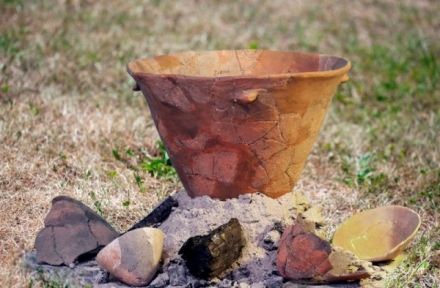Traces of the first Saltworks producing salt from surface salt waters derive from the Middle Neolithic period (3,500 B.C.). They were discovered in Barycz near Wieliczka. In historical times, between the 11th and the 12th century, Wieliczka was the largest salt processing centre in Małopolska, listed for the first time as Magnum Sal (i.e. Great Salt) in a document of the papal legate Giles, dated by medievalists from the years 1124/ 1125 (the date 1105 included in the document was probably added in the 13th century).a
At the end of the 13th century, an enterprise called “Cracow Saltworks” was developed, comprising salt mines in Wieliczka and Bochnia along with the Saltworks located there. It continued to operate in this organisational form for almost 500 years, until the first partition of Poland (1772), being the largest enterprise of this type in the Republic of Poland and at the same time one of the largest in Europe.
Salt was the most important mineral in the Polish state and, according to a binding law, it was the property of the ruler (the so-called salt regality). It is estimated that at the time of King Casimir the Great (14th century), revenue from the sale of salt constituted 1/3 of the state treasury income. The heyday of Cracow Saltworks was between the 16th and the middle of the 17th century. The mining staff had approx. 2,000 people, and production exceeded 30,000 tonnes. In the 17th century, salt was extracted in Wieliczka from three mine levels, and eight shafts were made (including the shaft that is currently used for servicing tourist traffic, the Daniłowicz shaft). The very first maps of the Wieliczka mine were made at this time. Long-term wars, the plagues that accompanied them and natural disasters shook the salt economy in the middle of the 17th century, and the lessors managing the Saltworks neglected protection works, contributing to the mine’s ruin. It was only in the following century when specialists from Saxony arrived, led by J. G. Borlach, that they managed to improve the enterprise’s operation with respect to the organisational and technical aspects.
The Austrian times (1772 – 1918) are characterised by a huge increase in production, leading to spatial extension of the Wieliczka mine, mechanisation of mining works (steam and electric machines), employment of professional engineering staff and setting out the first tourist route for visitors.




